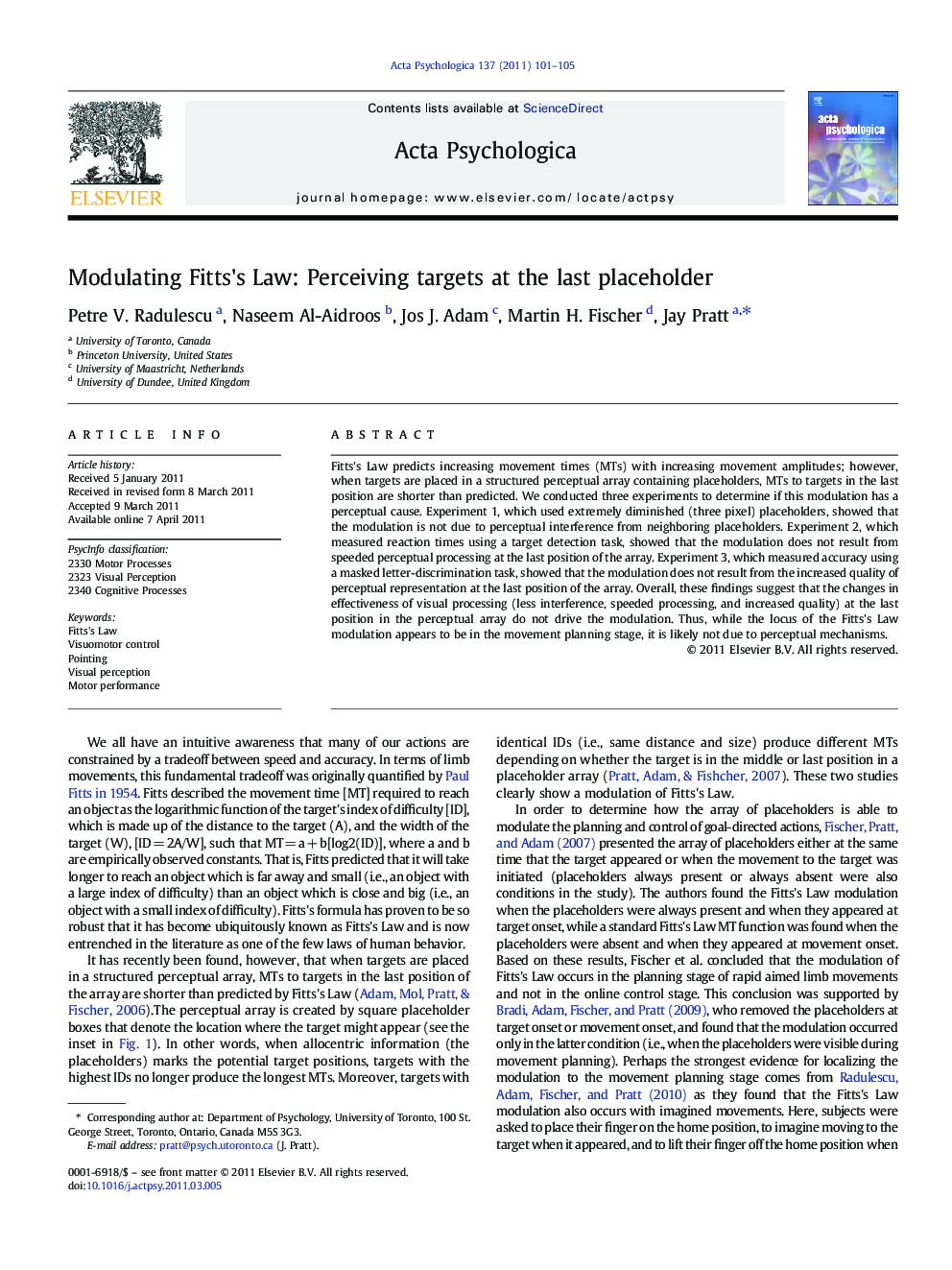| Article ID | Journal | Published Year | Pages | File Type |
|---|---|---|---|---|
| 920159 | Acta Psychologica | 2011 | 5 Pages |
Fitts's Law predicts increasing movement times (MTs) with increasing movement amplitudes; however, when targets are placed in a structured perceptual array containing placeholders, MTs to targets in the last position are shorter than predicted. We conducted three experiments to determine if this modulation has a perceptual cause. Experiment 1, which used extremely diminished (three pixel) placeholders, showed that the modulation is not due to perceptual interference from neighboring placeholders. Experiment 2, which measured reaction times using a target detection task, showed that the modulation does not result from speeded perceptual processing at the last position of the array. Experiment 3, which measured accuracy using a masked letter-discrimination task, showed that the modulation does not result from the increased quality of perceptual representation at the last position of the array. Overall, these findings suggest that the changes in effectiveness of visual processing (less interference, speeded processing, and increased quality) at the last position in the perceptual array do not drive the modulation. Thus, while the locus of the Fitts's Law modulation appears to be in the movement planning stage, it is likely not due to perceptual mechanisms.
Research Highlights► Is the modulation of Fitts's Law with placeholders is due to perceptual factors? ► Three experiments examined both perceptual interference and facilitation. ► The modulation of Fitts's Law appears to be in the motor, not perceptual, system.
